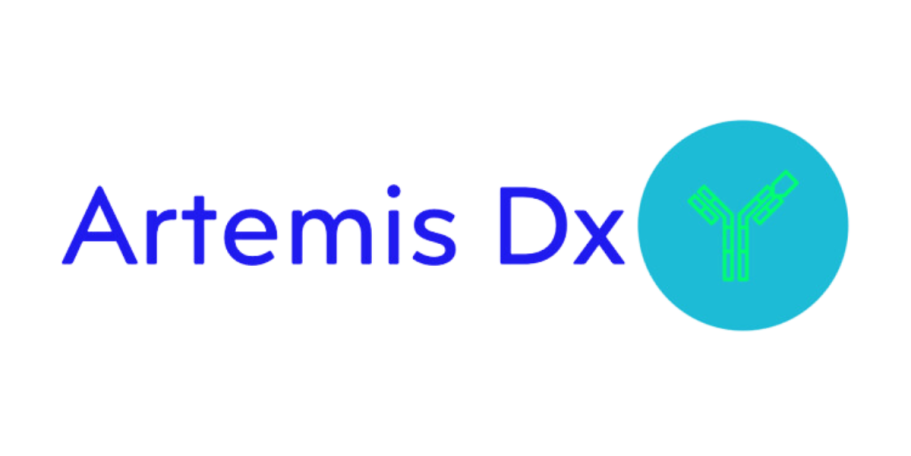Lateral Flow Nitrocellulose Membranes Part 1: Characteristics and Importance in Point-of-Care Diagnostic Assays
Hans Boehringer, Ph.D., and Bob Hudak, Artemis Dx
Lateral flow assays (LFAs) are widely used point-of-care diagnostic tools that offer rapid, cost-effective, and user-friendly results across a variety of applications, including medical diagnostics, veterinary diagnostics, environmental testing, and food safety. Central to the function of LFAs is the nitrocellulose (NC) membrane, which serves as the core substrate for reagent immobilization and fluid transport. The unique physical and chemical characteristics of nitrocellulose make it an ideal material for these applications.
Nitrocellulose is a highly flammable compound made by nitrating cellulose (usually derived from cotton or wood pulp) with a mixture of concentrated nitric acid and sulfuric acid. This process introduces nitro groups (-NO2) into the cellulose fibers, making it more reactive. Nitrocellulose is a key ingredient in many products and has a variety of uses, including in medical diagnostics such as lateral flow assays (LFAs), which are commonly employed in rapid diagnostic tests (RDTs). LFA’s are typically designed to detect specific substances (such as pathogens, biomarkers, hormones, or drugs, etc.) in biological samples like blood, urine, or saliva. LFA’s are also used in companion diagnostic, veterinary, environmental, and food safety applications to name a few.
Nitrocellulose is a nitrate ester of cellulose that forms a porous, hydrophilic membrane. One of its most critical properties is its ability to bind proteins efficiently through hydrophobic interactions and hydrogen bonding. This protein-binding capability is essential for immobilizing antibodies and antigens in LFAs, allowing specific biomolecular interactions to occur at defined zones (e.g., test and control lines). The membrane's high binding capacity ensures the sensitivity of the assay by facilitating strong and stable attachment of capture reagents.
Another defining feature of nitrocellulose membranes is their capillary flow properties. When a sample is applied to the sample pad of an LFA, it migrates along the membrane via capillary action without the need for external pumps or power. The flow rate through the nitrocellulose membrane is influenced by its pore size, porosity, and thickness. Membranes are available in various capillary flow times (typically expressed in seconds per 4 cm), allowing assay developers to select an appropriate flow rate to balance sensitivity and speed. Slower flow rates can enhance interaction time between analytes and capture molecules, improving assay sensitivity, while faster rates can reduce total assay time.
Uniformity is another key requirement for nitrocellulose membranes in LFAs. Consistent pore structure and protein-binding characteristics across the membrane are crucial to ensure reproducibility and reliability of results. Variations in membrane properties can lead to inconsistent signal intensity or false readings. Therefore, high-quality manufacturing processes and rigorous quality control are essential to produce membranes that meet stringent performance standards. Membranes manufactured by Cytiva (Marlborough, MA) MilliporeSigma (Burlington, MA), and Sartorius Stedim (Bohemia, NY) all meet these stringent performance standards.
Despite their advantages, nitrocellulose membranes are sensitive to environmental conditions such as humidity and temperature. They can become brittle or lose functionality if improperly stored. Furthermore, nitrocellulose is flammable and requires careful handling during production and storage.
Advancements in membrane technology have led to enhancements such as reduced background signal, improved signal contrast, and better compatibility with newer detection labels (e.g., fluorescent or magnetic particles). Some membranes are treated with surfactants or blocking agents to optimize flow and minimize nonspecific binding, further refining their performance in modern LFAs.
In LFAs, specialized types of nitrocellulose are used to ensure the proper functioning of the test. These nitrocellulose membranes are specifically designed to have the right balance of flow properties, pore size, and adsorption capacity to enable the efficient migration of liquids and capture of target analytes. The types of nitrocellulose used in LFAs include:
1. High-Flow Nitrocellulose:
- Properties: This type of nitrocellulose is designed to allow for a fast flow of the sample through the membrane, which helps reduce the time required for the test to complete.
- Usage: They are often used in tests where a rapid result is important and where the viscosity of the sample is low, such as urine-based tests.
2. Medium-Flow Nitrocellulose:
- Properties: Offers a balance between the flow rate and retention capacity, providing a compromise between fast movement of the sample and sufficient time for the target analytes to bind with the detection reagents.
- Usage: This type is commonly used in tests where moderate flow speed is needed, such as in blood or serum-based tests.
3. Low-Flow Nitrocellulose:
- Properties: Designed to create a slower flow through the membrane, which gives more time for analytes to interact with antibodies or other capture reagents on the membrane.
- Usage: Typically used in tests where the target analyte is present in low concentrations or when a longer reaction time is needed to ensure sensitivity.
Key Features of Nitrocellulose in LFA
- Pore Size: The pore size is typically in the range of 5–12 microns. This is important for controlling the flow rate and ensuring that analytes (like antibodies, antigens, or other markers) are properly captured. Membranes that are directly cast onto a Mylar backing do not include pore size as a characteristic but rather flow rates of water for a 4cm distance expressed in seconds. Typical flow rates range from 75-180 seconds.
- Binding Capacity: Nitrocellulose membranes used in LFAs must have a high binding capacity for proteins or antibodies, as the detection of the analyte is based on the specific interaction between the analyte and the test's immobilized capture reagent.
- Wettability and Surface Chemistry: The membrane should have optimized wettability for uniform sample migration. Its surface can be treated or modified to improve the adsorption of antibodies, antigens, or other biomolecules used in the assay.
Common Brands and Types
- Cytiva (Whatman) Nitrocellulose Membranes: A commonly used brand in diagnostic applications. Cytiva membranes come in many different varieties and flow characteristics, including membranes used in quantitative and high sensitivity assays.
- MilliporeSigma Nitrocellulose Membranes: Commonly used in LFA applications with various flow rates. These membranes are also used for high-sensitivity assays.
- Sartorius Stedim Membranes: Membranes are known for their use in both diagnostic and research settings. Sartorius Stedim membranes are also available as slow, medium and fast membranes that are commonly used in LFAs.
- MDI Membrane Technologies (India): High quality membranes for Immunodiagnostics at various flow rates.
In lateral flow assays, the nitrocellulose membrane plays a vital role by facilitating both the controlled movement of the sample and effective interaction with assay reagents, ensuring accurate and dependable test results. Its exceptional protein-binding capacity, optimal capillary flow characteristics, and compatibility with rapid diagnostic formats make nitrocellulose a foundational material in lateral flow technology. Continued research is enhancing its performance, driving greater sensitivity, reliability, and flexibility in point-of-care diagnostics.
At Artemis Dx, we provide expertise and hands-on experience to every LFA development project. We rigorously evaluate a variety of nitrocellulose membranes to determine the ideal fit for your specific application. Stay tuned for Part 2 of the blog where we will discuss our approach to membrane selection and evaluation.
Get in touch with us today for a custom LFA development quote at hans.boehringer@artemisdx.com or bhudak@artemisdx.com.
References
- Wang, X., Xue, C.-H., Yang, D., Jia, S.-T., Ding, Y.-R., Lei, L., Gao, K.-Y., & Jia, T.-T. (2021). Modification of a nitrocellulose membrane with nanofibers for sensitivity enhancement in lateral flow test strips. RSC Advances, 11(43), 26493–26501. https://doi.org/10.1039/D1RA04369B
- Ching, K. H., Lin, A., McGarvey, J. A., Stanker, L. H., & Hnasko, R. (2012). Rapid and selective detection of botulinum neurotoxin serotype-A and -B with a single immunochromatographic test strip. Analytical Chemistry, 84(19), 7891–7897. https://doi.org/10.1021/ac301571d
- Lateral Flow Solutions. (n.d.). NC Membrane. Retrieved from https://www.lateralflowsolutions.com/en/NCmembrane-p15684.html
We need your consent to load the translations
We use a third-party service to translate the website content that may collect data about your activity. Please review the details in the privacy policy and accept the service to view the translations.

